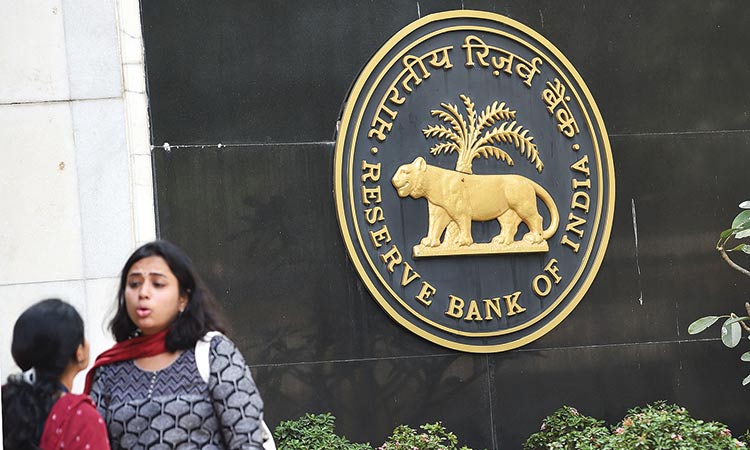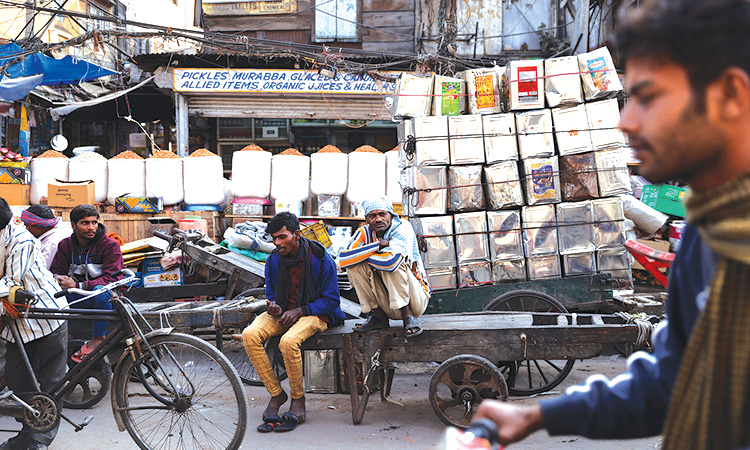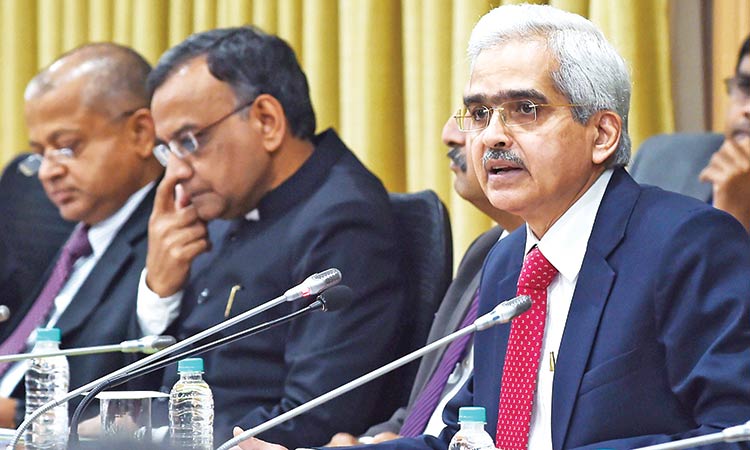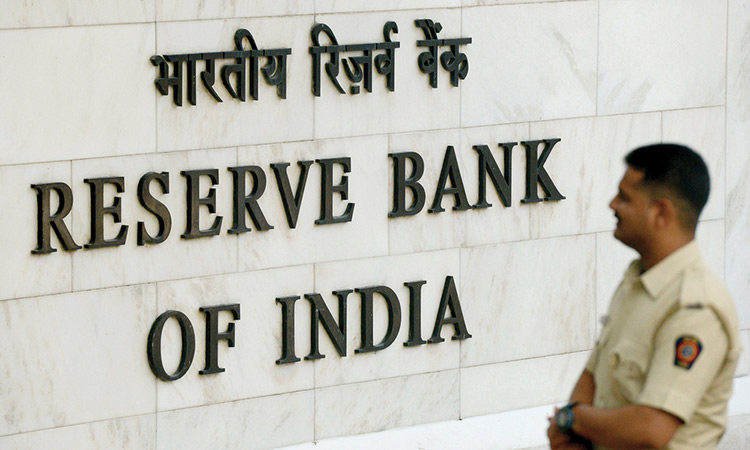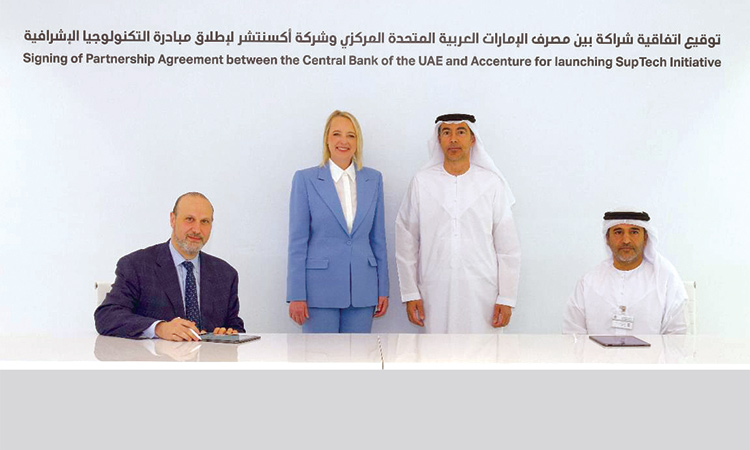State Bank of India pins hopes on recovery after record profit
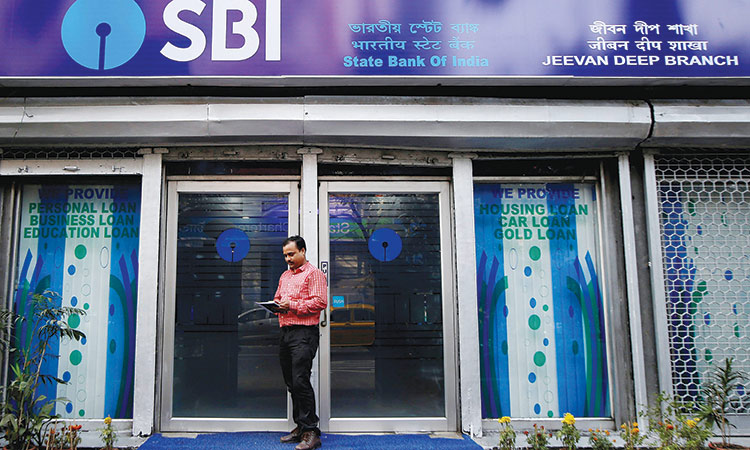
A man checks his mobile phone in front of the State Bank of India branch in Kolkata, India. File/Reuters
Domestic banks have struggled to contain bad loans, especially in their retail portfolios, as the pandemic and resultant lockdowns hit economic activity and limited borrowers’ ability to repay loans.
SBI posted a four-fold jump in slippages, or new bad loans, for the first quarter ended June as its home loan and small business segments struggled.
“If economic activity is back on track, our ability to maintain better performance in terms of asset quality will be maintained,” Chairman Dinesh Khara told reporters after the results.
The country’s deadly COVID-19 second wave has eased from a peak in April and May, allowing businesses to get to work, although restrictions are still in place in some states and analysts worry about a third wave later this year.
The bank said it had recovered 47 billion rupees of the June quarter’s 157 billion rupees of slippages in July. It also said it would still aim to keep its current-year slippage ratio at 2 per cent, compared with the Indian banking industry’s overall slippage ratio of 2.5 per cent in fiscal 2021.
Half of SBI’s home loan book, typically one of the most insulated segments for most lenders, is to non-salaried people. Khara said the bank aims to bring down its bad loans in the segment to less than 1 per cent versus 1.39 per cent at June end.
He expected its loan book to grow by 9 per cent in the current financial year, versus an earlier estimate of 10 per cent.
Credit growth was 5.64 per cent in the first quarter, led by a 16.5 per cent growth in retail advances.
Net profit rose 55 per cent to 65.04 billion rupees ($877 million) in the first quarter, versus analysts’ estimates for a profit of Rs61.09 billion.
A recovery of Rs16.92 billion from bankrupt airline Kingfisher also boosted the bottom line.
SBI’s shares closed up 2.3 per cent at a record high of Rs456.95. They have outperformed the Nifty Bank index with a more than 60 per cent jump this year.
Lending major State Bank of India (SBI) on Wednesday reported a year-on-year rise of 55.25 per cent in its net profit for Q1FY22.
Accordingly, the bank, reported its highest quarterly net profit of Rs 6,504 crore in Q1FY22. Besides, the lender’s net interest income for the quarter under review increased by 3.74 per cent YoY.
“Net NPA ratio at 1.77 per cent is down 9 bps YoY. Gross NPA ratio at 5.32 per cent is down 12 bps YoY.”
“Provision Coverage Ratio (PCR) is at 85.93 per cent, down 39 bps YoY.” In addition, the bank said its ‘Capital Adequacy Ratio’ (CAR) has improved by 26 bps YoY to 13.66 per cent as on June 2021 - without including Q1FY22 Profit.
“Return on Assets (RoA) increased by 15 bps YoY to 0.57 per cent in Q1FY22 against 0.42 per cent in Q1FY21.”
RBI cautions against offers of buying or selling old notes. The Reserve Bank of India (RBI) has cautioned the public from falling prey to offers of buying or selling of old bank notes and coins.
In a statement, the central bank said that certain elements are fraudulently using the name and logo of the Reserve Bank of India, and seeking charges, commission and tax from public, in transactions related to buying and selling of old banknotes and coins through various online and offline platforms.
“It is clarified that Reserve Bank of India does not deal in such matters and never seeks charges/commissions of any sort. The Reserve Bank of India has also not authorised any institution/firm/person etc to collect charges/commission on its behalf in such transactions,” it said.
The RBI has advised members of public to remain cautious and not to fall prey to elements using its name to extract money through such fictitious and fraudulent offers.
